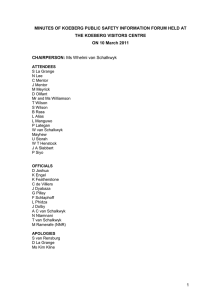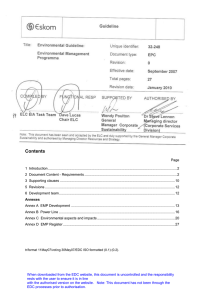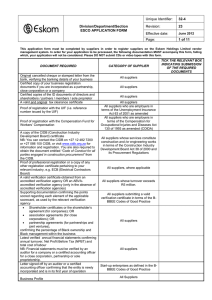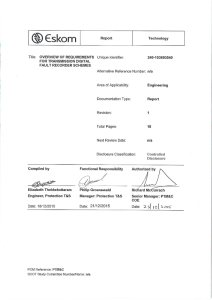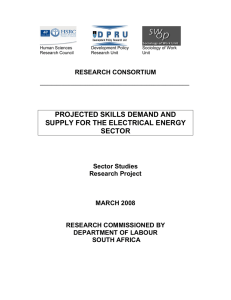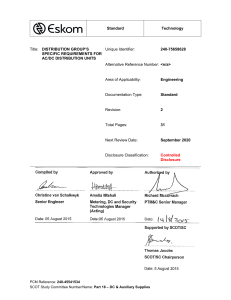How does system management work?
advertisement
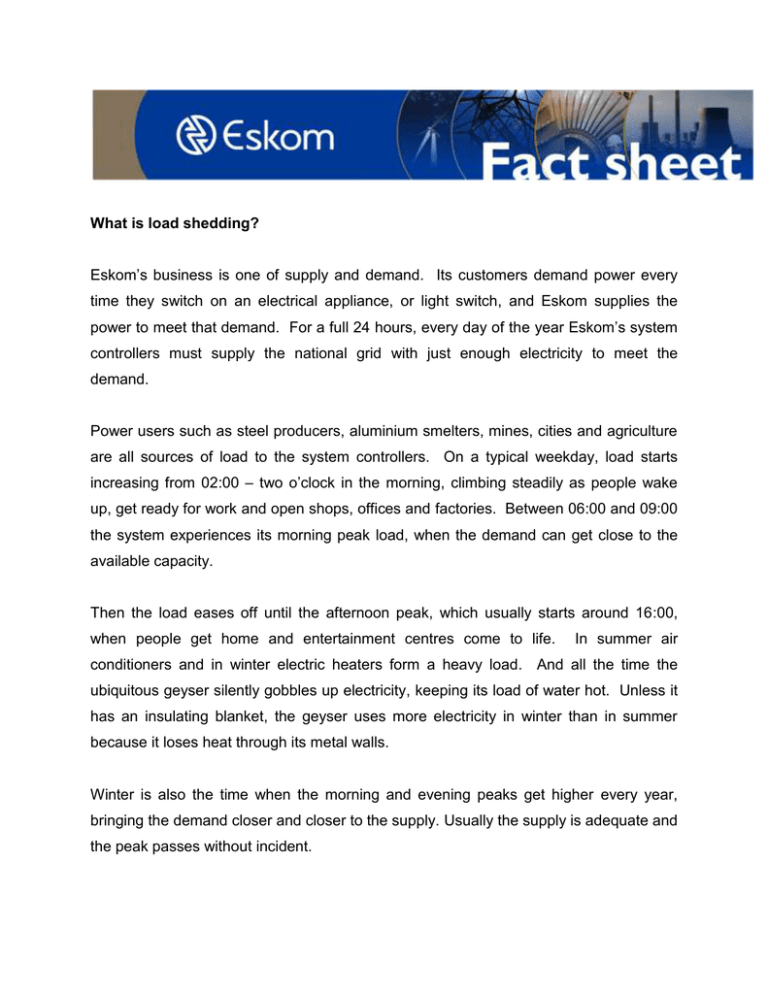
What is load shedding? Eskom’s business is one of supply and demand. Its customers demand power every time they switch on an electrical appliance, or light switch, and Eskom supplies the power to meet that demand. For a full 24 hours, every day of the year Eskom’s system controllers must supply the national grid with just enough electricity to meet the demand. Power users such as steel producers, aluminium smelters, mines, cities and agriculture are all sources of load to the system controllers. On a typical weekday, load starts increasing from 02:00 – two o’clock in the morning, climbing steadily as people wake up, get ready for work and open shops, offices and factories. Between 06:00 and 09:00 the system experiences its morning peak load, when the demand can get close to the available capacity. Then the load eases off until the afternoon peak, which usually starts around 16:00, when people get home and entertainment centres come to life. In summer air conditioners and in winter electric heaters form a heavy load. And all the time the ubiquitous geyser silently gobbles up electricity, keeping its load of water hot. Unless it has an insulating blanket, the geyser uses more electricity in winter than in summer because it loses heat through its metal walls. Winter is also the time when the morning and evening peaks get higher every year, bringing the demand closer and closer to the supply. Usually the supply is adequate and the peak passes without incident. Occasionally, however, problems arise. A huge turbo-generator in a power station develops a fault and “trips” – shuts down, no longer contributing to the supply, as happened to one of the Koeberg units recently. When this happens, load exceeds supply, and the load has to be reduced to a point where the available capacity can handle it, otherwise the result for the whole system could be serious. So the system controllers “shed some load” – they switch off the supply to various customers for a short while. Eskom has contracts with some large power users that allow it to do this. These customers can cope with being switched off, as long as the interruption does not exceed specified periods – say 30 minutes. Usually that is enough time for total demand to ease a little and for the problem to pass. If not, Eskom must switch off another large user and restore power to the first. Occasionally, when demand goes unexpectedly high, cities suddenly become victims of load shedding. In most cases this does not last longer than two hours. Eskom follows certain principles when implementing load shedding. Load shedding is done on a rotational basis, limiting it to two hours per area. Where possible, Eskom tries to avoid load shedding in areas where there are critical and sensitive services like hospitals, economic hubs like shopping centres, strategic product areas and high security areas. So, if your lights go off unexpectedly, it might be a local fault affecting a comparatively small area around you, or it might be a problem at a power station that takes time to fix.




